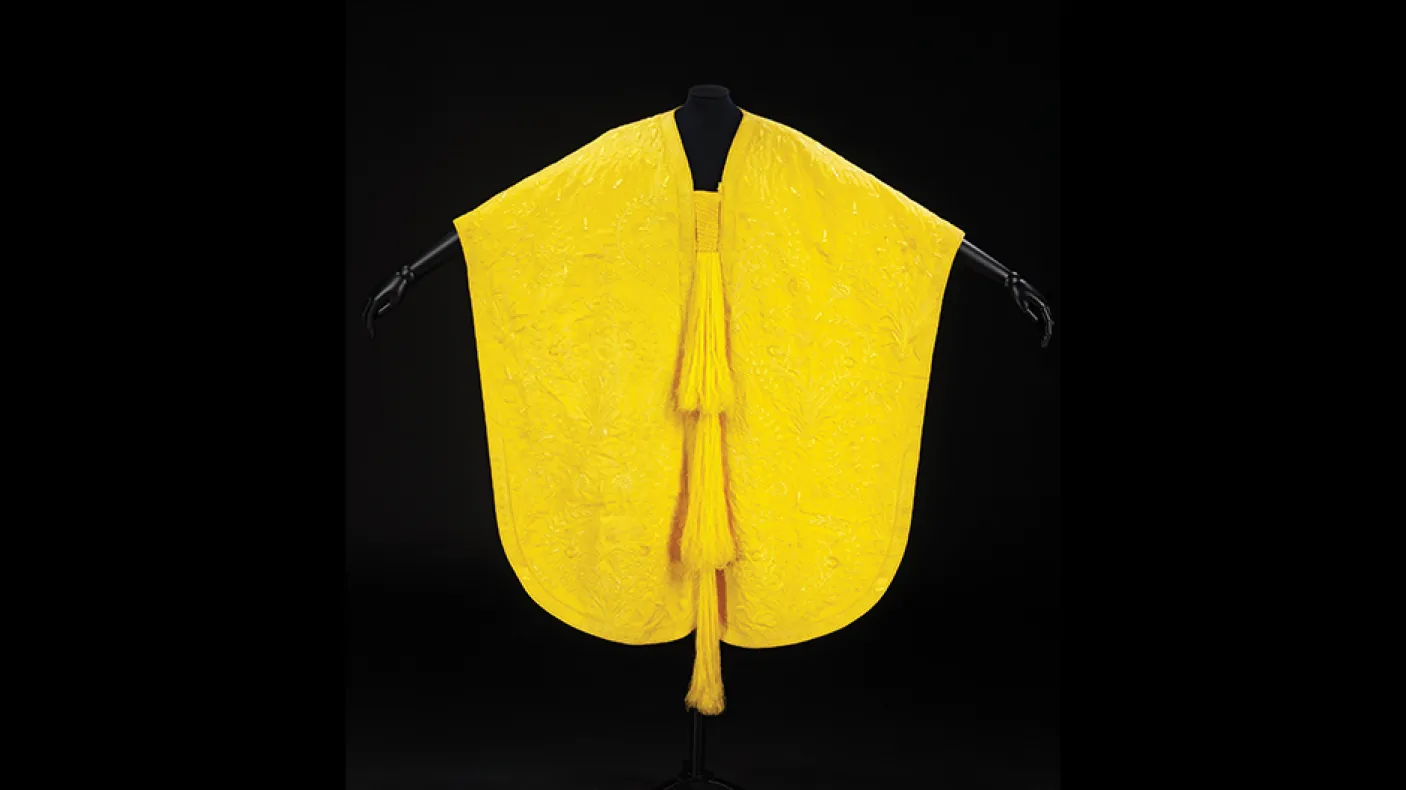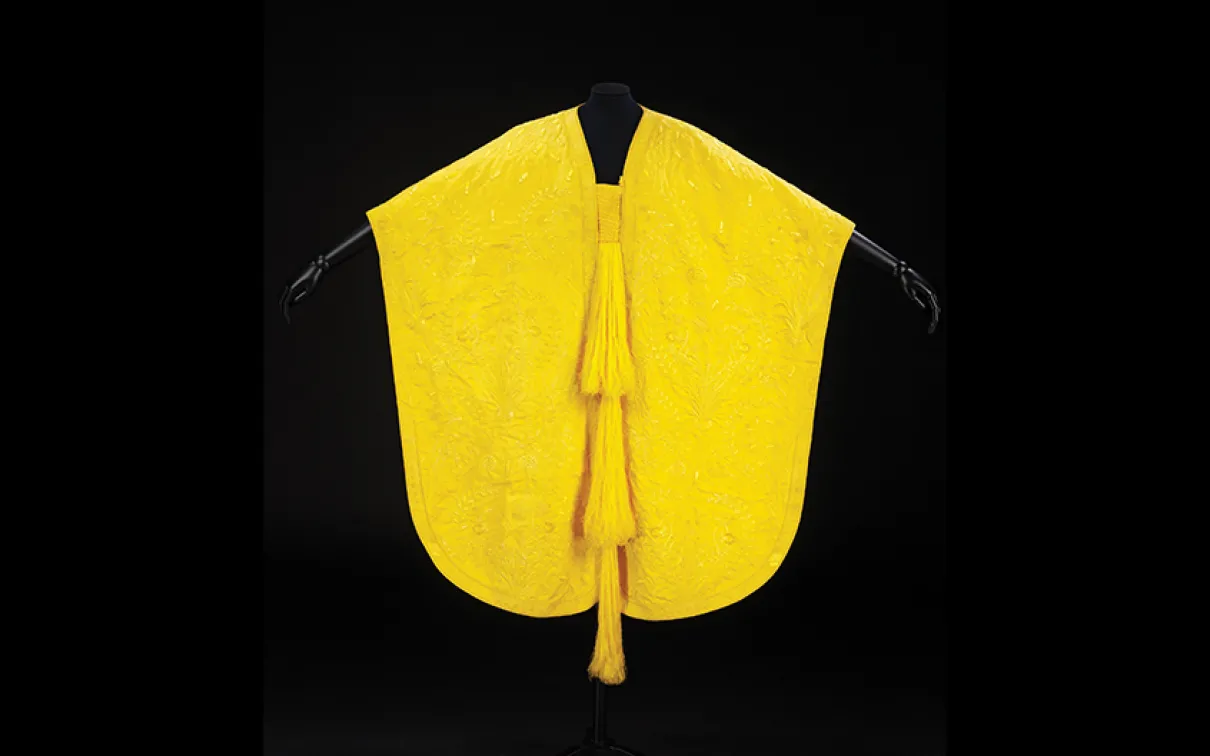High-fashion cape created using silk by the golden orb spider
More than one million spiders produced the large handwoven cloth
Published
Categories
Lemurs and chameleons
Lemurs and chameleons are most associated with Madagascar, a large island nation lying off the east coast of Africa. But in recent years a very different island animal has come to fascinate the world: the golden orb spider (Nephila madagascarensis). In 2004, designers Simon Peers and Nicolas Godley teamed up in Madagascar to create the world’s largest handwoven spider silk fabrics using the iridescent golden silk produced by the local golden orb. The large spiders and their enormous webs are highly visible in Madagascar’s capital city, Antananarivo, strewn across telephone wires high above the busy streets. After three years and many experiments, Peers—known for his previous work in reinvigorating silk weaving in Madagascar—and Godley finally met with success. They revived and adapted nineteenth-century systems and tools that allow the hundreds of yards of silk filaments to be safely extracted from individual female spiders, which are then released.
It takes 23,000 spiders to produce around 28 grams of the silk, and it took more than 1,000,000 spiders to produce the large handwoven cloth the team aspired to create. Their first creation, a shimmering three-metre-long brocaded shawl woven by local master weavers, paid homage to Madagascar’s intriguing historic textile traditions. Their second piece, a three-dimensional cape designed by Peers and exquisitely embellished by Madagascar’s renowned embroiderers, is the stuff of high fashion. Not seen in over six years since it made its debut at the Victoria & Albert Museum, the cape will be on display in all its resplendent, glowing, shimmering glory throughout the run of Spiders at the ROM.
Sarah Fee
Sarah Fee is Curator of Eastern Hemisphere Textiles and Fashion at the Royal Ontario Museum.



